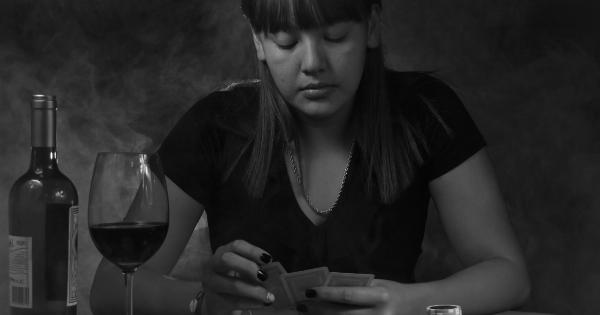Alcohol consumption is prevalent among women, with approximately 37% of women in the United States reporting drinking at some point in the past month according to the National Institutes of Health.
While alcohol affects both men and women, women have unique challenges when it comes to alcohol use and abuse. This article explores the unique challenges that women face when it comes to alcohol.
1. Biological Differences
Biologically, women are more susceptible to the negative effects of alcohol. Women have less water in their bodies than men, which means that alcohol is more concentrated in their bodies.
Additionally, women have lower levels of the enzyme that metabolizes alcohol in the stomach and liver. These differences result in women experiencing the negative effects of alcohol at lower levels than men, and with less alcohol consumption.
2. Social Stigma
Women who drink are often subject to social stigma and judgment. Society often portrays women who drink as loose or promiscuous, which can lead to feelings of guilt or shame. This stigma can make it difficult for women to seek help for alcohol abuse.
Women also face more pressure to conform to societal expectations, which can lead to greater stress and subsequent alcohol abuse.
3. Trauma and Stress
Women are more likely to experience trauma, such as sexual assault, which can lead to increased alcohol use as a coping mechanism. In addition, women also tend to internalize stress more than men, which can lead to greater alcohol use and abuse.
This can include the stress of balancing work and family obligations, as well as the stress of societal expectations and gender roles.
4. Hormonal Changes
Women experience hormonal changes throughout their menstrual cycle, pregnancy, and menopause, which can impact alcohol use.
During menstrual cycles, women experience changes in their mood and energy levels, which can make them more susceptible to alcohol-related behaviors. During pregnancy, alcohol can have severe negative effects on the developing fetus, making it important for women to avoid alcohol during this time.
During menopause, women may experience changes in their relationship with alcohol, as well as increased health risks related to alcohol consumption.
5. Body Image and Eating Disorders
Women are also more likely to struggle with body image issues and eating disorders, which can lead to alcohol abuse. Alcohol can be used as a way to suppress appetite or cope with negative body image thoughts.
Additionally, individuals with eating disorders are often prone to alcohol abuse and may use alcohol as a way to cope with their condition.
6. Treatment Barriers
Women often face unique treatment barriers when seeking help for alcohol abuse. These can include childcare responsibilities, lack of transportation, and lack of insurance coverage.
Women also often face greater financial insecurity, which can make it more difficult to seek treatment if they are unable to take time off work.
7. Recovery Support
Women also often have different support needs when it comes to recovery. Treatment programs that are geared towards men may not address the unique challenges that women face.
Recovery support groups may also not be as accessible to women, particularly those with childcare responsibilities or those who live in more isolated communities.
8. Health Risks
Alcohol abuse can have severe negative health consequences for women, including liver disease, breast cancer, and heart disease. In addition, women who abuse alcohol are at greater risk for sexually transmitted infections and unintended pregnancy.
It is important for women to seek treatment for alcohol abuse in order to protect their health.
9. Cultural Differences
Cultural differences can also impact women’s alcohol use and abuse habits. For example, women from certain cultures may be more likely to view alcohol as a sign of sophistication or may see heavy drinking as a way to assert independence.
These cultural factors can make it more difficult for women to seek help for alcohol abuse.
10. Domestic Violence
Women who experience domestic violence are at greater risk for alcohol abuse. Domestic violence can lead to trauma and stress, as well as feelings of isolation and hopelessness.
These factors can make it more difficult for women to seek help for their alcohol abuse, and can also make it more difficult for them to leave abusive relationships.
Conclusion
Women face unique challenges when it comes to alcohol use and abuse. From biological differences to social stigmas and treatment barriers, it is important for women to seek help and support when struggling with alcohol abuse.
By understanding the challenges that women face, we can work to develop more inclusive and effective treatment programs.






























